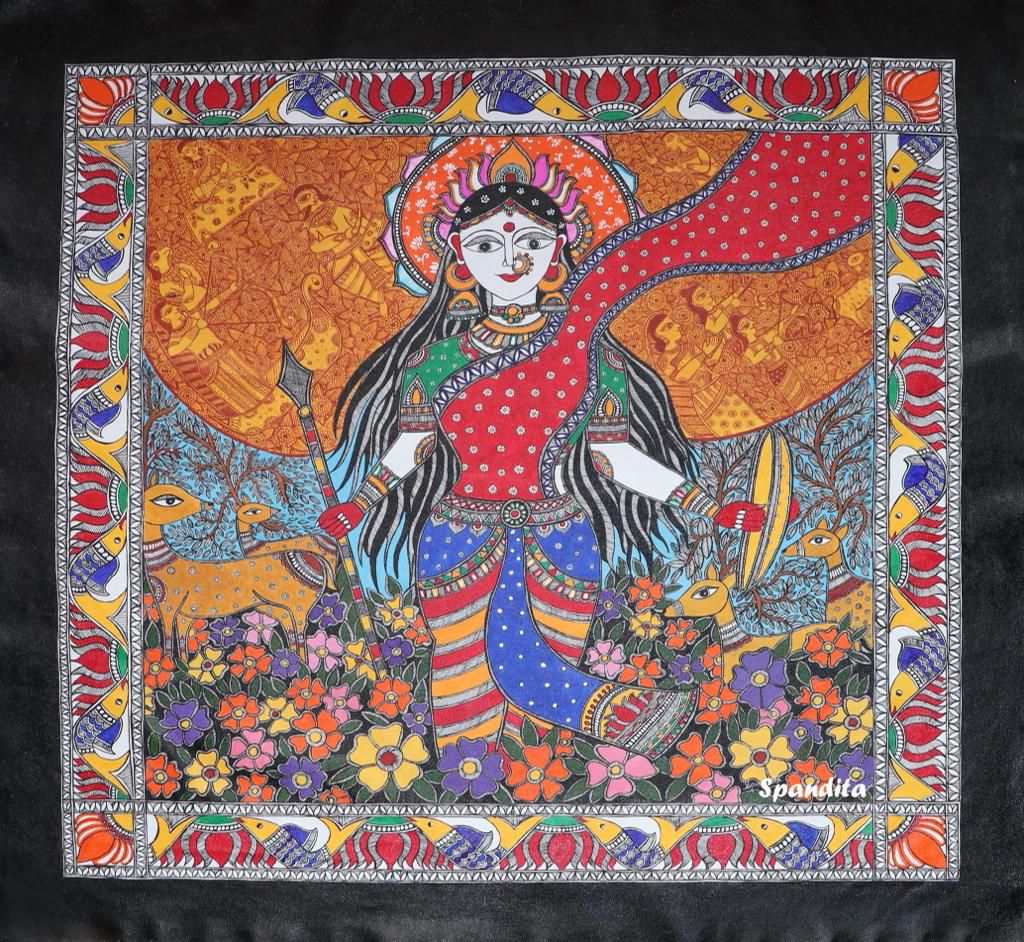Sita the unsung hero: The special mention of unsung warriors in Indian Prime Minister’s address to the nation this year, was a very carefully designed remark to make this nation more inclusive and less hierarchical and indicative of a mature democracy. The term veerangna ( Warrior female) and the possibility of Indian feminist perspective taking a new shape with indigenous paradigm laced with the emergence of a new indic which would redefine the power in terms of connecting and creating a new world can’t be denied.
Sita, the embodiment of Power
It would be placing the wheels of soft power of culture in neglected corners with a firm understanding of stree (women) as shakti (power) or nucleus of power. The elements of courage and sacrifice since the Ramayana period of its two stalwarts Ram and Sita preserved in folktales, songs and regional lore already has the potential to initiate a discourse on the idea of a ‘just world order’ (Ramrajya), based on ideas of duty, community service, others before the self and sacrifice of supreme order.
“Stree shakti”, or women’s full potential being realised and brought to the core has a historic leaf since the times of Vedas and coming down to the Ramayana. We have a special warrior Sita who can be a role model in various fields such as law, governance, science, technology, bureaucracy, academics, and politics, it would restate the manifold contribution of women in both public and private spaces.
As a warrior and a strong woman, Sita’s strength here doesn’t necessarily mean physical strength,. It meant being mentally strong to have the ability to stand up and face challenges. She is symbol of endurance, the silent power of suffering and sacrifice, almost redefining the contours of power and writing a fresh script of power to connect and heal, not to dominate. The idea of silent strength in contemporary times, the patience and integrity of Sita has the potential to show a new conflict free way of life to the nation. She gave a new definition to motherhood by being a Single parent and Guru for her children and has set an example of extraordinary determination.
In the realms of statecraft, diplomacy, eco-commitments, symbiotic relationships between different forms of lives; ideas of womanhood, feminism; and thinking of Sita as reinventing your tradition pronounced the urgency of transcendence from materiality to immortal essentialism.
Sita, a rare example of intellect and decision maker
Sita remains the finest and rare intellectual encounter where she weaves her own narrative of decision making to a new level. She is born without a womb, she is a female avatar, and she is also Vaidehi whose existence can be reached beyond her body. She is Maithili, the linguistic tradition thus embodying the supreme form of human expression and a high spiritual possibility beyond the physical, material trappings which points towards a new possibility of a indic discourse weaning away from the women’s discourse centred
around her body and the limitations of it.
In a scenario where bloodline is decided by the male scion, we have a special case of Janki who is Janak’s daughter to carry forward the the physical, material trappings.
Sita’s character, a reflection of moral and spiritual dimension of human life
Sita creates a space where one can also reconcile with consciousness that enables one to make genuine reflections on the moral and spiritual dimensions of human life. The importance of retelling the narrative set around cultural icons like Sita appears to lie in the
depiction of an extremely sensitive but movingly powerful character of hers.
Also, it is imperative to revisit the growth and important markers of Indian feminism which can’t be dated post-colonial in its experiences. It will amount to leaving a large body of oral, literary and cultural history of Indian subcontinent which dates back to Vedas. In order to retrieve the lost consciousness of our binding factors such as Sita who was a testimony of whatever stands for human dharma in its manifestations, she was a binder, a marker to rally around. Hence Indian feminism can’t be revisited without locating Indian feminism since Vedas.
History’s synchronization and harmony of man-nature-culture has culminated in its exceptional spiritual expression through its cultural practices. Sita is often seen as the uniting force, a deep spiritual tradition. It appears all the conflicting traits and attributes prefer to come together in an unusually harmonious manner on the issue of Janki. Sita is an extremely powerful character always respected the sanctity of human love and dharma but never lost an opportunity to question with a powerful, resolute efficacy which gives credence to the Upanishadic civilizational value of a nation which has a legacy of a questioning, inquisitive, cerebral society, an open dialogic nation with adequate space for freedom of thought and speech. Hence, it’s important to map the practices, places and set narratives to invoke an Indian telling of its own warrior daughters lest the charismatic cultural icons remain unsung and unrecognised in their country of origin.











